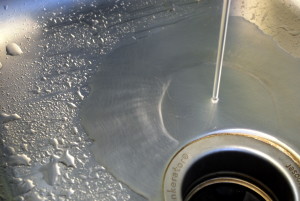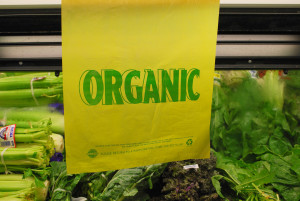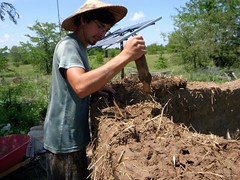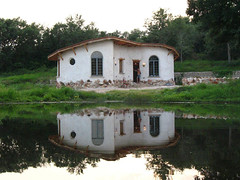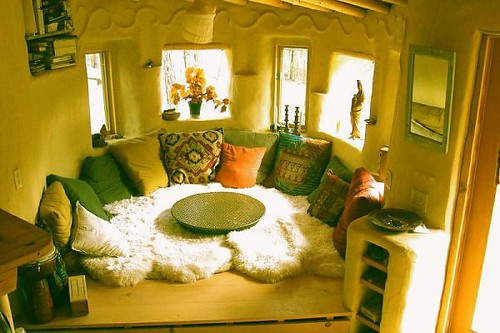 A simple life is a good life. Voluntary simplicity is the act of consciously choosing to live with enough, but without excess. Simplicity is not about depriving oneself or living in ultra-sparse conditions. Living simply is about reducing the clutter and narrowing down one’s possessions, engagements, and thoughts to something more manageable. It is about eliminating the noise to find the essence of the good life.
A simple life is a good life. Voluntary simplicity is the act of consciously choosing to live with enough, but without excess. Simplicity is not about depriving oneself or living in ultra-sparse conditions. Living simply is about reducing the clutter and narrowing down one’s possessions, engagements, and thoughts to something more manageable. It is about eliminating the noise to find the essence of the good life.“In character, in manner, in style, in all things, the supreme excellence is simplicity.” ~ Henry Wadsworth Longfellow
The benefits of simplicity in seeking a good life
People aim to simplify their lives for a number of reasons. Generally, they get fed up with the hustle and bustle of the modern day.
Let’s face it. Our lives today can be overwhelming. We are constantly bombarded with inducements to get us to buy more, do more, and learn more. By simplifying, we can overcome this, get back to something more basic, and life a better life.
Here are some of the benefits of simplicity:
1. Simplicity unclutters our lives
Daily living becomes jammed with stuff, activities, urgent tasks, chores, appointments, responsibilities and information. When we simplify, we choose to eliminate a lot of this. An uncluttered life is an unfettered life. Simplicity gives us back the life we have given up to all the clutter.
2. A simpler life gives us more time to relax
By eliminating much of the excess in our lives, we have more time to relax. Our possessions no longer require so much of our time. We don’t have to work as hard to maintain our lifestyle which gives us more time to unwind. A relaxed mind is more creative and effective. Simplicity frees us up to do what we want instead of what we have to do.
3. Living simply costs less
The less you buy, the less you spend. This is simple enough, isn’t it? Of course, the fewer things you own means the less maintenance and upkeep you have to pay. A smaller, more modest home requires less money to heat and cool. Avoiding buying things on credit saves you the interest. There are so many ways that a simpler life saves you money!
4. You achieve better life balance with simplicity
Balancing your time between work, home and other responsibilities gets much easier when you choose to eliminate some things. The choices you need to make are easier because fewer things are competing for your time. This is a challenge that many of us face and where we can gain benefit by simplifying.
5. Simple living makes you green
Your footprint on the environment is lighter when you live a less complicated existence. By consuming less, you discard less. You also emit fewer harmful substances into the environment. If everyone took this approach, then maybe we wouldn’t be facing some of the challenges out there today.
6. Less cleaning and maintenance required
Big possessions like cars, boats, hot tubs, and pools often require cleaning and maintenance. By simplifying, you can eliminate the time and expense required by these things. We often become a slave to the things we own. Instead of enjoying these items, we end up having to spend what would be our leisure time taking care of them.
7. A simpler life means fewer interruptions
The phone rings less often. There are fewer knocks on the door. We have time to have a conversation. All our activities and engagements are constantly tugging us away from quiet time with those that matter the most to us. In the end, how much of what we are doing is going to matter? It is usually the least important things that force us to put the truly important on the back burner.
8. Simplicity allows us to focus
Narrowing our field of view allows us to focus on what is really important. Things creep into our life until it is so crowded that we can’t decide where we should apply our attention. It takes effort and some difficult choices to simplify, but it is worth it because simplification will allow you to accomplish more on what really matters.
9. You will be more organized and able to locate things faster
The less stuff you own and the fewer things you attempt to do will make it easier for you to get organized. Once you are organized much of the confusion, frustration, and wasted time will disappear. You will actually be able to find something when you need it. Wouldn’t that be refreshing?
10. A simple life has less entanglements
The more that is crammed into our day, the more complicated things become. We often get entangled in the web of back-to-back appointments, activities, commitments, and engagements we have. Are the good things in your life robbing you of the great things? Simplifying will untangle your life and give you back control.
11. Lowers stress and worry
We have less to worry about with a simpler life. It is trying to maintain everything that freaks us out. Once we voluntarily give it up, then we eliminate the source of much of our anxiety. Let it go!
12. Reduces busyness
Busyness is activity with no real purpose. It seems we have a lot of this nowadays. By consciously choosing to live a simple life, we start to recognize things we do that have no value. This gives us the opportunity to cut these things from our lives. Life goes by too quickly to waste time on busyness.
13. Simplicity challenges us to be more creative
How can you make do in the upcoming circumstance with what you already have? Answering this question regularly will challenge your creativity. It will help you to start using your brain again to solve problems instead of just using your pocketbook to try to buy your way out.
14. A simpler life helps us to appreciate classic beauty
Extravagance is often gaudy. We overfill our homes and our lives with so much clutter that it robs us of our ability to appreciate true beauty. Simplifying our surroundings allows us to see the classic elegance of nature. It gives us a new lens through which we view the world. A simpler life is just plain pretty!
“Simplicity is the ultimate sophistication.” ~ Leonardo da Vinci
A good life is waiting on the other side of simplicity
These benefits are available to all of us. All we have to do is make a choice to live a simpler life. It isn’t an easy decision and quite frankly most people won’t choose it. However, for some, simplicity is their path to a good life. They will choose to simplify because they know deep inside that there is no other way for them to go.
Have you simplified? What benefits have you enjoyed?
If you liked this, you might also enjoy…
A Simple Life Is A Good Life – I Believe Less Is More
20 Hidden Ways Your Stuff Screws You Over
30 Ways to Make Your Life More Simple
A Simple Life Is A Good Life – I Believe Less Is More
20 Hidden Ways Your Stuff Screws You Over
30 Ways to Make Your Life More Simple

